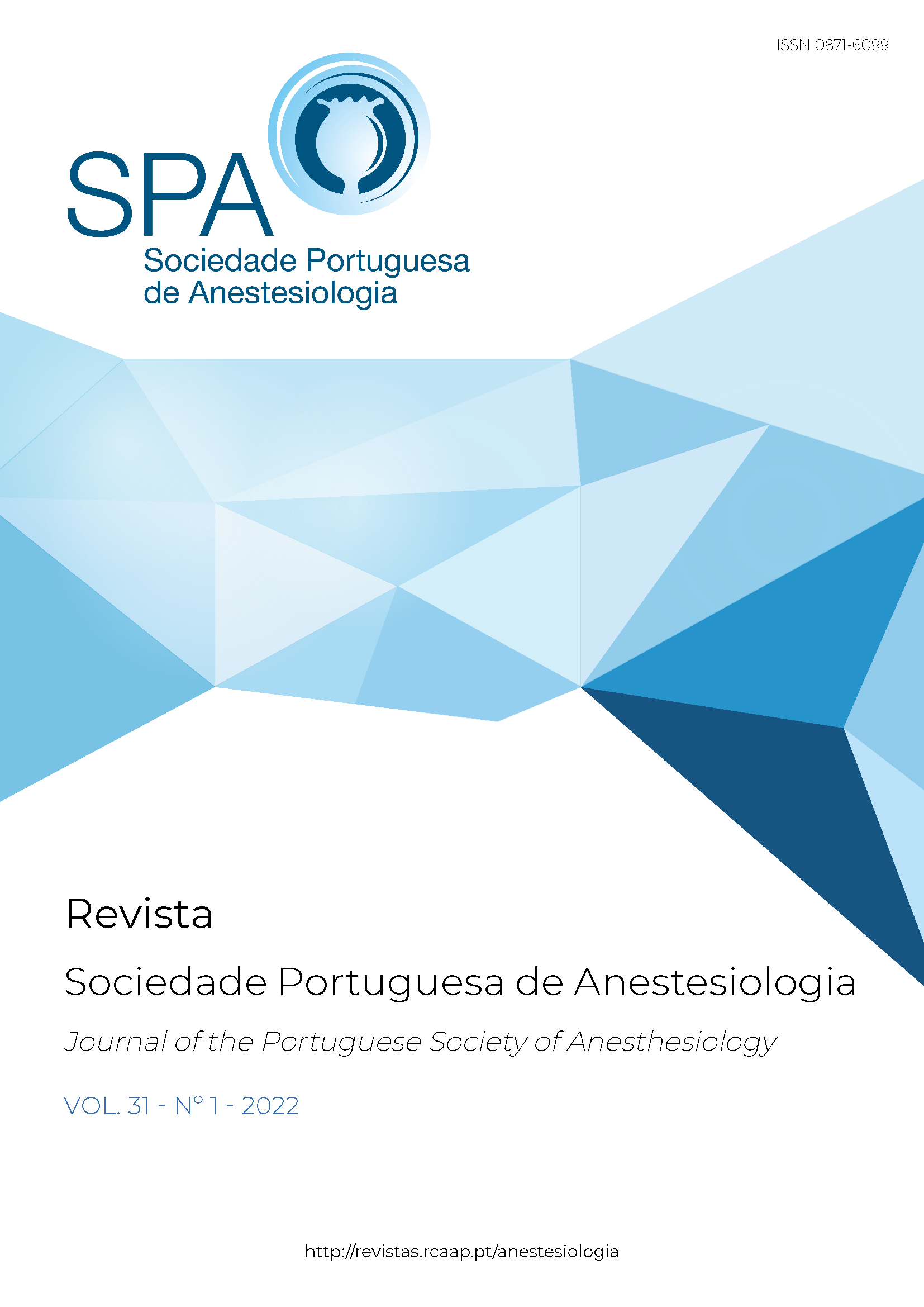Anesthetic challenge in the aftermath of a Pandemic
Giant ovarian tumor (35 Kg)
DOI:
https://doi.org/10.25751/rspa.26619Keywords:
Ovarian tumor, general anesthesia, Protective ventilationAbstract
A 59y woman was scheduled for exploratory laparotomy to remove a giant ovarian neoplasm. Medical history relevant to anemia (9 mg/dL) and coronary heart disease. In pre anesthetic consultation she reported short of breath (grade 1 in mMRC 1) and functional capacity >4 METs. Physical examination relevant to peripheral edema and last transthoracic echocardiography with a normal ejection fraction (56%). Surgery was scheduled after gynecology, anesthesia and general surgery discussion. Balanced general anesthesia was conducted with a rapid sequence induction. Maintenance with sevoflurane,rocuronium e fentanyl 1,2. After endotracheal intubation, volume-controlled ventilation was setted to protective ventilation: low tidal volumes and high respiratory rate (15-18).3 During surgery, peak inspiratory pressure (PICO) with 30 cmH2O was observed. She kept hemodynamically stable. After giant tumor resection (35kg) peak inspiratory pressure dropped, and increased the mean arterial blood pressure and urinary output. No major perioperative cardiorespiratory complications were observed, like pulmonary re-expansion.1,2
Downloads
References
- Akazawa, M; et al. Management of a Giant Ovarian Tumor More Than 30 kg: A Case Report and Review of the Literature. J. of Gynecologic Surgery. 2018; 34(5), 243–247.
- Güraslan H, Yaşar L, Ekin M, Kaya C, Cengiz H, Gonenc M. A successful management of a giant mucinous ovarian tumor with intraoperative controlled fluid aspiration. Eur J Gynaecol Oncol. 2015;36(5):615-7. PMID: 26513896.
- Hemmes SN, et al. High versus low positive end-expiratory pressure during general anaesthesia for open abdominal surgery (PROVHILO trial): a multicentre randomised controlled trial. Lancet. 2014 Aug;384(9942) 495-503.
Downloads
Published
How to Cite
Issue
Section
License
Copyright (c) 2022 Sofia Pereira

This work is licensed under a Creative Commons Attribution-NonCommercial 4.0 International License.
Articles are freely available to be read, downloaded and shared from the time of publication.
The RSPA reserves the right to commercialize the article as an integral part of the journal (in the preparation of reprints, for example). The author should accompany the submission letter with a declaration of copyright transfer for commercial purposes.
Articles are published under the terms of the Creative Commons Attribution Non-Commercial License (CC BY-NC).
After publication in RSPA, authors are allowed to make their articles available in repositories of their home institutions, as long as they always mention where they were published.


